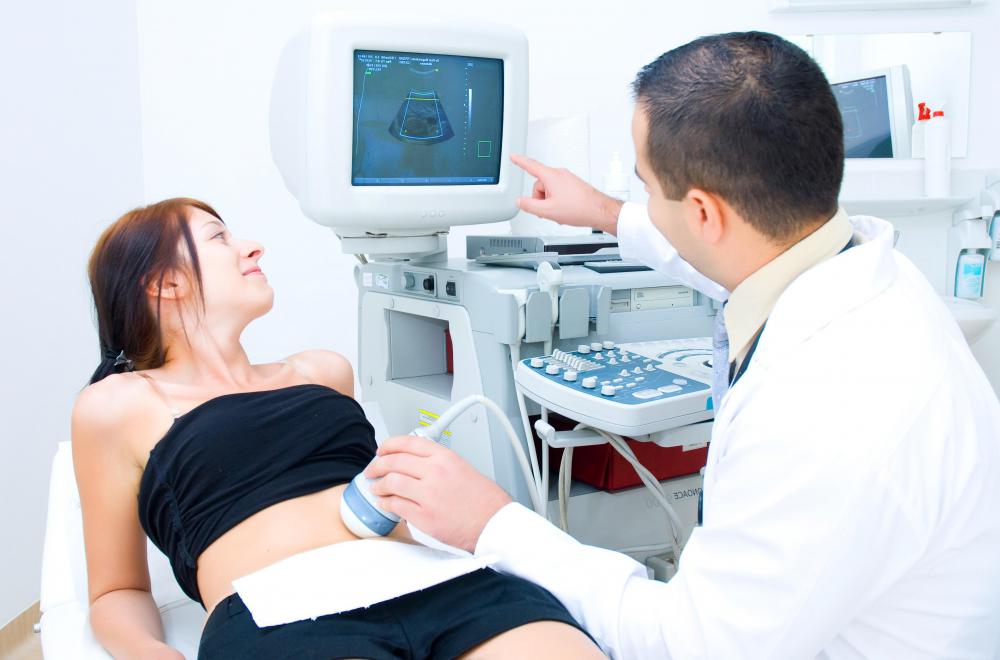At WiseGEEK, we're committed to delivering accurate, trustworthy information. Our expert-authored content is rigorously fact-checked and sourced from credible authorities. Discover how we uphold the highest standards in providing you with reliable knowledge.
What Are the Different Types of Ultrasonic Applications?
Sound is the pressure oscillation of a medium, such as air or water. The wavelength of sound varies with temperature, medium, and initial energy. Ultrasonic refers to wavelengths above the human range of hearing, approximately 20,000 kilohertz. Many ultrasonic applications use the mechanical vibrations of sound to disrupt cellular or particulate structure. Other applications use the reflection of sound waves to detect or observe objects.
Ultrasonic applications derive from the properties of sound. Sound is not light; it consists of mechanical vibration of a gas or liquid, while light has an electromagnetic nature. The waves propagate in three dimensions from a point source, dissipating in energy and decreasing in amplitude as they travel. Less dense media, such as gases, carry sound waves farther than liquids. Solids conduct sound by impact by the wave on one surface and physically moving the gas or liquid on the other surface of the solid.

The physical impact of sound waves improves the consistency of solid-liquid mixtures in laboratory and commercial-scale ultrasonic applications. Homogenization occurs by reduction of the particle size of solids, dispersal of the solids, or the breakup of agglomerates of particles. The ultra-high frequency energy of the sound waves causes cavitation in the liquid. Cavitation occurs as alternating areas of high and low pressure, which causes micro-bubbles to form and collapse violently.

Biological laboratories use the mechanical force of ultrasound to break up cells and separate organelles, which are small intracellular components. Useful biological compounds can be extracted from the cellular fluid. Similarly, ultrasonic disruption of cells can be used as a sterilization technique. Cleaning laboratory ware of stubborn organic matter or mineral deposits is often accomplished by soaking the pieces in ultrasonic baths.

Sonochemistry promotes chemical reactions by using the violent cavitation mixing of ultrasonic applications. Reaction speeds increase due to the increased mixing of the reactants or the increased activity of mixed-phase catalysts. Commercial applications of this technology include the transformation of vegetable oils into biodiesel fuels.
Other ultrasonic applications take advantage of the wave nature of sound. Sound reflects off solid surfaces and can be received by an antenna. Many ultrasonic applications provide diagnostic information in the medical field to aid in the assessment of fetuses, tumors, and injuries. These noninvasive examinations are simple, painless, and inexpensive.
Sonar uses sound as a ranging device, equipment that transmits and receives wave energy to locate objects. The wavelengths may vary from infrasonic to ultrasonic. Ranging applications are used by military units for target acquisition, navigation, and security. Fishermen often use sonar to help locate schools of fish. Drones and robots may be controlled by ultrasonic commands.
AS FEATURED ON:
AS FEATURED ON:













Discuss this Article
Post your comments